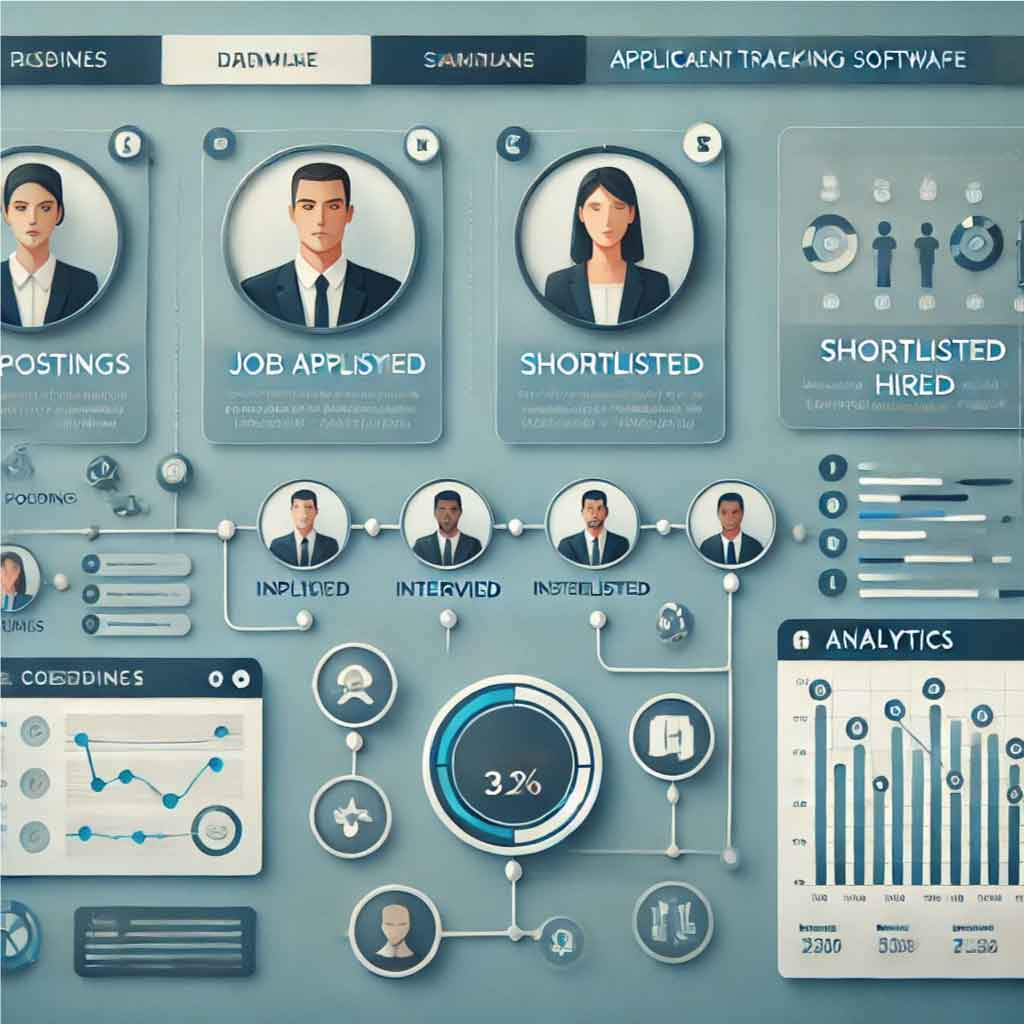Applicant Tracking Software (ATS) is designed to help businesses manage the recruitment process from start to finish. Initially developed as a solution to handle the overwhelming volume of applications during the online job boom, ATS systems now integrate advanced features like artificial intelligence and analytics.
Popular examples include Greenhouse, known for its robust reporting capabilities; Workable, praised for its intuitive design and AI-powered recommendations; and BambooHR, which integrates seamlessly with HRIS tools. Related software categories include Human Resource Management Systems (HRMS), Recruitment Marketing Software, and Talent Management Systems, offering complementary tools to ATS for broader workforce optimization.

The following table provides a side-by-side comparison of essential features across three leading Applicant Tracking Software tools. This visual breakdown highlights similarities and differences, helping you choose the software that best suits your organization’s needs.

The feature comparison chart highlights how Greenhouse, Workable, and BambooHR each excel in different areas while showcasing some limitations. Greenhouse emerges as the most comprehensive solution, supporting nearly all features except candidate experience tools. Workable offers strong functionality, especially in candidate experience and job posting automation, but lacks features like resume parsing and mobile access. BambooHR, while strong in integration and HR-related features, falls short in areas such as job posting automation, collaboration tools, and talent pooling.
This evaluation suggests that Greenhouse suits larger organizations with diverse needs, Workable is ideal for user-friendly, AI-driven recruitment, and BambooHR excels for businesses seeking integration with broader HR functions.
In the video below, Sam Struan describes how applicant tracking software works from the perspective of an applicant. This video shows how some for core aspects of applicant tracking software works.
The image below represents a sample dashboard for an applicant tracking software system. It showcases a streamlined interface with sections for job postings, candidate profiles, and a hiring pipeline that tracks progress through stages such as applied, interviewed, shortlisted, and hired. The dashboard also includes analytics with charts and graphs to provide actionable insights into the recruitment process. Designed with modern usability in mind, the layout emphasizes clarity and organization, making it easy for recruiters to navigate and manage applications efficiently.

Applicant Tracking Software is defined by its ability to simplify and centralize the recruitment process, making it easier for HR teams to identify, track, and hire the best candidates. From automating job postings to improving collaboration and compliance, ATS tools offer comprehensive functionality tailored to hiring needs. Below, we delve into the core features that distinguish this software category and how they add value to the recruitment lifecycle.
Applicant Tracking Software (ATS) is a tool that streamlines recruitment by managing applications, tracking candidates, and automating hiring workflows.
HR teams and recruiters at companies of all sizes benefit, but it’s especially valuable for organizations that manage high volumes of applications.
Yes, many ATS tools offer branded career portals, automated updates, and communication tools that enhance candidates’ interactions.
ATS platforms often integrate with payroll, background checks, job boards, and onboarding tools to streamline the HR process.
Most ATS systems are designed to comply with GDPR, EEO, and other regional hiring regulations. Always verify compliance before choosing a solution.
ATS software uses Natural Language Processing (NLP) and machine learning algorithms to extract structured data from resumes. It analyzes key elements such as name, contact information, skills, experience, and education while ignoring irrelevant formatting. Most systems support formats like PDFs, DOC/DOCX, and TXT. However, poorly formatted resumes (e.g., those with tables or unusual fonts) can cause parsing errors, which is why some ATS solutions also allow manual data validation.
Yes, most modern ATS systems offer APIs and pre-built integrations with external tools such as HRIS platforms, background check services, payroll systems, and job boards. Data synchronization typically occurs via real-time API calls or periodic batch updates, ensuring information remains consistent across systems. Advanced ATS platforms also support webhooks, enabling event-driven updates, such as triggering an onboarding process when a candidate’s status changes to “hired.”
ATS platforms implement robust data security measures, including encryption (both in transit and at rest), access control policies, and audit logs. To comply with GDPR and similar regulations, they provide features such as candidate consent management, automated data deletion upon request, and transparent data usage policies. Additionally, many platforms allow administrators to set role-based access permissions, ensuring sensitive information is only visible to authorized personnel. These measures help protect candidate data and reduce legal risks for organizations.